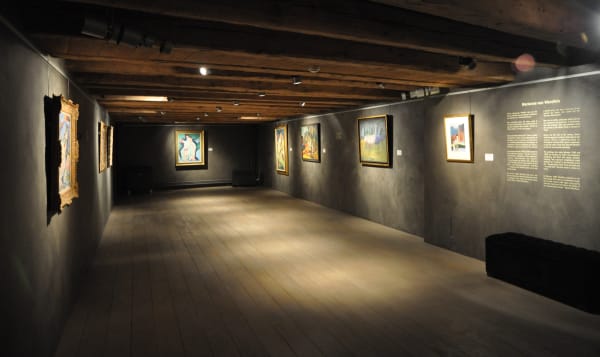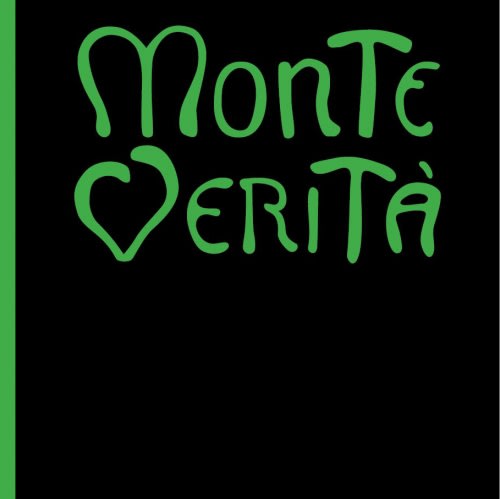Monte Verità: Expressionist Utopia
Founded in the early 20th century as an alternative vegetarian colony, Monte Verità quickly became a cradle of European counterculture as prominent artists, anarchists, philosophers and dancers settled there. Key themes apparent in the exhibited works are Dance, Nature and the Human Body as forms of expression of artistic and spiritual freedom. An important part of the exhibition will be dedicated to two movements that were integral to the philosophical foundations of Monte Verità: Lebensreform (“life reform”) which emerged at the end of the nineteenth, beginning of the twentieth century and Freikörperkultur (free body culture) that has its roots in the beginning of the eighteenth century.
Artists in the exhibition include: Max Beckmann, Wladimir Burliuk, Vladimir Davidovich Baranov-Rossiné, André Derain, Kees van Dongen, Erich Heckel, Alexey von Jawlensky Ernst Ludwig Kirchner, Paul Klee, August Macke, Edvard Munch, Otto Mueller, Max Pechstein, Karl Schmidt-Rottluff, Marianne von Werefkin, Georg Tappert and Arthur Segal.
AV Modern & Contemporary is pleased to announce “Monte Verità: Expressionist Utopia”, the first in a series of exhibitions presenting major artists whose work has been strongly influenced by their experiences on Monte Verità, the utopian colony founded at the beginning of the 20th century in Ascona, Switzerland. This inaugural show, launching the exhibition cycle, will display a selection of European and Russian Avant-Garde artists such as Marianne von Werefkin, Alexej von Jawlensky, Ernst Ludwig Kirchner and Arthur Segal.
With the support of important institutions, private foundations, museums, libraries, archives and private collectors, this is the first monographic exhibition highlighting how the iconography of European artists in the first quarter of the twentieth century was influenced by the way of life on Monte Verità. Reproductions from the archive of the Fondazione Monte Verità in Ascona will be on view as well as loans from the Fondation Beyeler, Basel, the Kirchner Museum, Davos, and Merzbacher Kunststiftung, Zurich.
Founded in the early 20th century as an alternative vegeterian colony, Monte Verità quickly became a cradle of European counterculture as prominent artists, anarchists, philosophers and dancers settled there. Key themes apparent in the exhibited works are Dance, Nature and the Human Body as forms of expression of artistic and spiritual freedom. An important part of the exhibition will be dedicated to two movements that were integral to the philosophical foundations of Monte Verità: Lebensreform (“life reform”) which emerged at the end of the nineteenth, beginning of the twentieth century and Freikörperkultur (free body culture) that has its roots in beginning of the eighteenth century.
Artists in the exhibition include: Max Beckmann, Wladimir Burliuk, Vladimir Davidovich Baranov-Rossiné, André Derain, Kees van Dongen, Erich Heckel, Alexey von Jawlensky Ernst Ludwig Kirchner, Paul Klee, August Macke, Edvard Munch, Otto Mueller, Max Pechstein, Karl Schmidt-Rottluff, Marianne von Werefkin, Georg Tappert and Arthur Segal.
“This meticulously researched exhibition is an opportunity to celebrate an exceptional artistic centre, which, in its own way, shaped the rich cultural landscape of the early 20th century. It shows how artists explored the idyllic image of Switzerland as an earthly paradise as well as the intellectual and artistic scene that developed around Monte Verità”, comments Sofia Komarova, Director of AV Modern & Contemporary.
“Monte Verità to me stands for an experiment of a group of people that searched for an alternative lifestyle which did not remain a theoretical concept but was actually put into practice”, says Andreas Schwab, Curator Monte Verità Foundation, Ascona.
The exhibition will look at the myth of Alpine Switzerland when it became a travel destination, between the end of the 19th and beginning of the 20th century. Switzerland was celebrated for its extraordinary nature, breath-taking landscape, and the healing powers of its mountain air. It soon came to be seen by many artists as offering an idyllic alternative lifestyle. Monte Verità in particular became a magnet, a refuge and a hub for revolutionary thinkers and artists that fled from social and political restrictions at the beginning of the 20th century, in search of artistic freedom, inspiration from nature and inner renewal.
It was there, shortly before World War I, that Rudolf von Laban, a dance theoretician, and Mary Wigman, who later became world-famous as a pioneer of expressionist dance, began to work on a new kind of dance that was to be free, without any restrictive rules and an authentic expression of the individual’s inner life. On the opening night of the exhibition, the famous dance duo Norbert Servos and Jorge Morro from DanceLab Berlin, will perform a site-specific project specially created for the gallery’s show. The duo is strongly inspired by Harald Kreutzberg, one of the foremost protagonists of German Expressionist dance in the 1920s. “It is fascinating for us to create a correspondence between the two dimensionality of the exhibited art and the three dimensionality of the dance. We will use parts of our dance piece El Circulo Eterno – An Hommage to Harald Kreutzberg and adapt them to the specifics of the gallery space“, add Norbert Servos and Jorge Morro.




